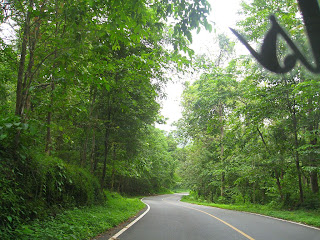The coalfields of Wallonia(the french speaking province in Belgium) were once the most productive in western Europe almost for 8 centuries, but in the 1970s there was a spate of closure of these mines,as the precious black thing became uneconomical to extract.
The Blegny Mine, near Liège in Brussel, was one of the last to cease production (in 1980), but the authorities decided to preserve it so that future generations could appreciate the physically punishing work the miners had to endure, and the huge contribution they made to Belgium’s prosperity.Blegny is the only mine in continental Europe where you can descend to the underground at a depth of 30 and 60 metres.
English speaking guides and audio guides also are easily available at the ticket counters for assistance through out the trip.
Visitors have to wear all safety gears before going down, a video documentary also is shown abt the evolution of coal and its life cycle.
The guide once after the documentary, discusses about the do's and dont's, further takes small groups one after another in the miners lift down to 30m and then further to 60m.
Some of thedrills are still in working condition and the working demo is also shown.
Every nitty gritty about the process can also be founddisplayed in form of charts and diagrams on every trails.
The trip literally makes us ponder about the hardships and efforts faced by the coal miners amidst suffocation , such far down underground with no light and air.
The Blegny Mine, near Liège in Brussel, was one of the last to cease production (in 1980), but the authorities decided to preserve it so that future generations could appreciate the physically punishing work the miners had to endure, and the huge contribution they made to Belgium’s prosperity.Blegny is the only mine in continental Europe where you can descend to the underground at a depth of 30 and 60 metres.
English speaking guides and audio guides also are easily available at the ticket counters for assistance through out the trip.
Visitors have to wear all safety gears before going down, a video documentary also is shown abt the evolution of coal and its life cycle.
The guide once after the documentary, discusses about the do's and dont's, further takes small groups one after another in the miners lift down to 30m and then further to 60m.
Some of thedrills are still in working condition and the working demo is also shown.
Every nitty gritty about the process can also be founddisplayed in form of charts and diagrams on every trails.
The trip literally makes us ponder about the hardships and efforts faced by the coal miners amidst suffocation , such far down underground with no light and air.
















































